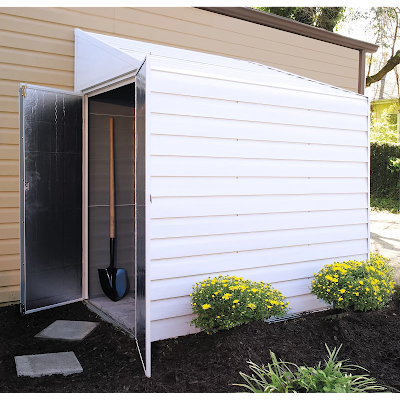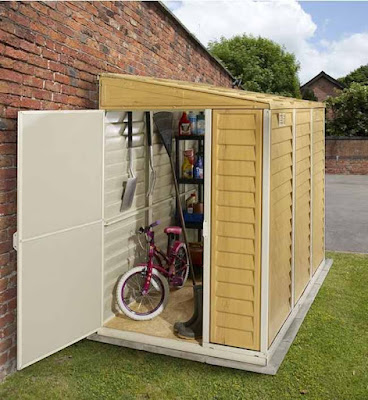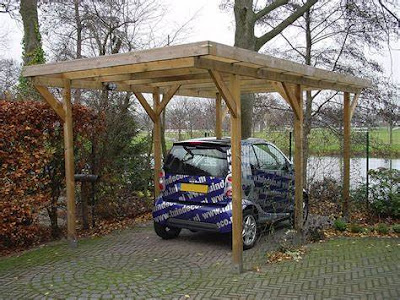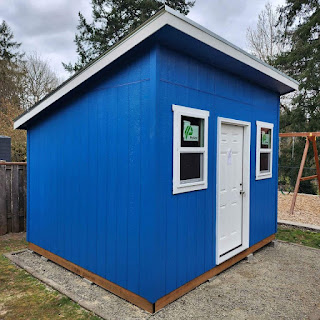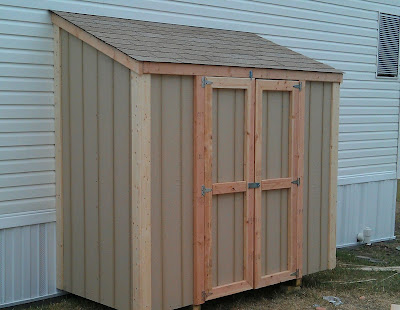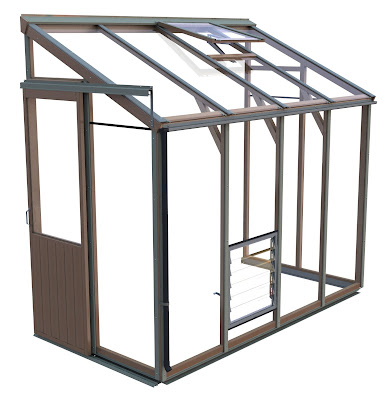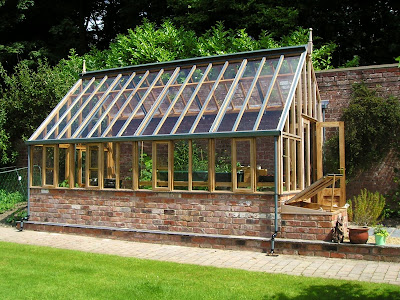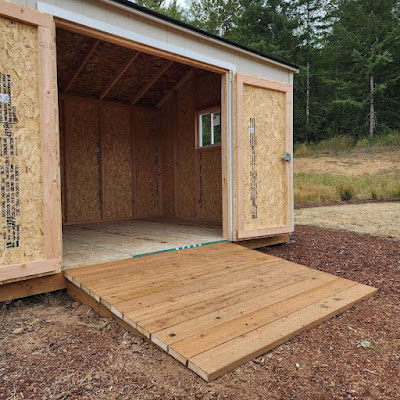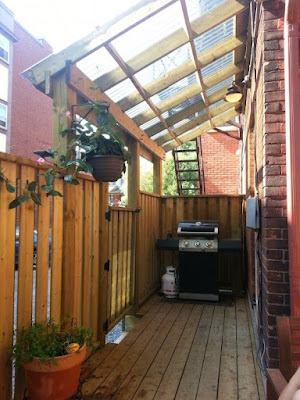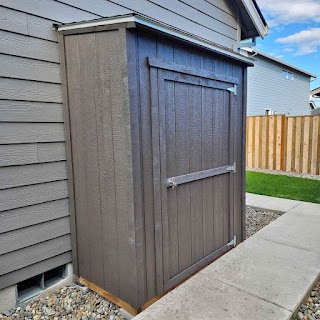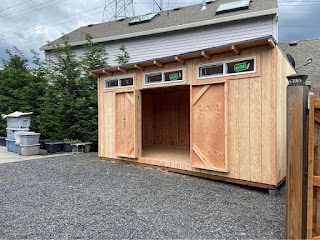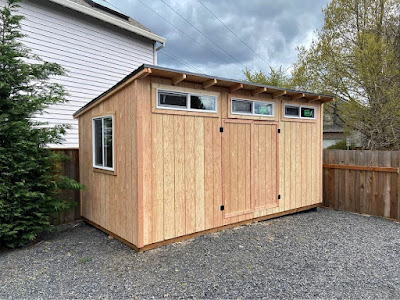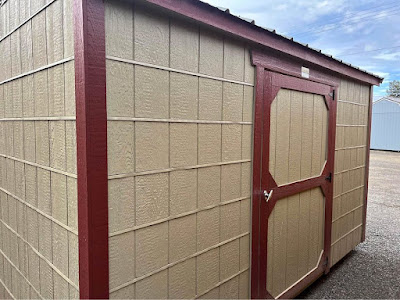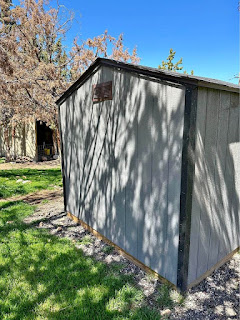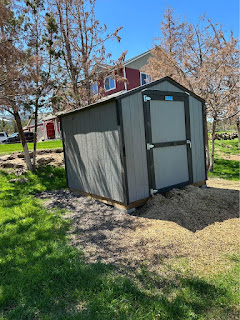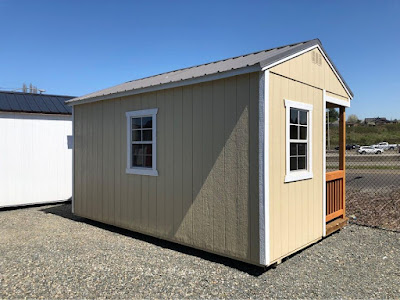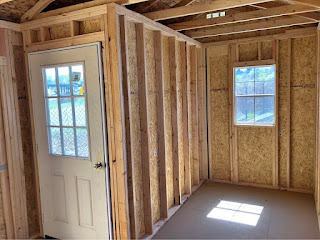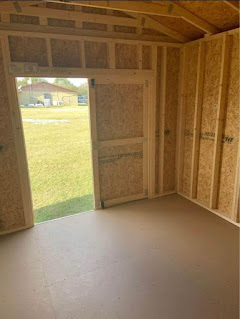A 4x6 lean to shed offers a compact yet versatile space for organizing and decluttering your belongings. With smart design ideas, you can maximize storage efficiency and create an organized oasis. Discover practical 4x6 lean to shed design ideas to help you declutter and streamline your space.
1. Utilize Vertical Space
Make the most of your shed's vertical space by installing shelves, hooks, and hanging organizers. Utilize the walls to store tools, equipment, and other items, keeping the floor area clear and maximizing storage capacity.
2. Adjustable Shelving
Incorporate adjustable shelving units in your shed design. This allows you to customize the height and spacing of the shelves to accommodate items of various sizes. Adjustable shelves provide flexibility and adaptability as your storage needs change over time.
3. Clear Storage Bins
Opt for clear storage bins or containers to easily identify the contents without the need to open each one. Label the bins for quick reference, ensuring that everything has a designated place and can be found easily.
4. Pegboards and Tool Racks
Install pegboards or tool racks on the walls to keep your tools organized and easily accessible. Hang items such as hammers, screwdrivers, and wrenches for convenient storage and efficient use of space.
5. Overhead Storage
Take advantage of the overhead space in your shed by installing overhead storage racks or suspended shelves. This area is ideal for storing seasonal items or rarely used items that can be accessed with the help of a ladder or step stool.
6. Magnetic Strips
Attach magnetic strips to the walls or inside cabinet doors to store and organize small metal tools, such as drill bits or small wrenches. Magnetic strips keep these items visible and within easy reach, reducing clutter on the work surfaces.
7. Workbench with Storage
Incorporate a workbench into your shed design, complete with built-in storage options. Drawers, cabinets, and shelves integrated into the workbench provide a convenient place to keep tools, supplies, and project materials, keeping your workspace tidy.
8. Folding and Hanging Options
Maximize space efficiency by using folding and hanging options. Install fold-down work surfaces, folding chairs, or drop-leaf tables that can be tucked away when not in use. Use wall-mounted hooks or hangers to hang items like bicycles, ladders, or garden hoses.
9. Zone Planning
Divide your shed into functional zones based on the type of items you store. Create a gardening zone, a tool storage zone, a sports equipment zone, or any other specific areas that align with your needs. This zoning helps maintain order and makes it easier to locate items.
10. Proper Lighting
Ensure adequate lighting in your shed to make it easier to find items and work efficiently. Consider installing LED lights or overhead fixtures that provide bright and even illumination throughout the space.
By implementing these practical design ideas, you can transform your 4x6 lean to shed into a well-organized and clutter-free space. Utilize vertical storage, adjustable shelving, clear containers, and designated zones to create an efficient storage system. With a thoughtfully designed shed, you'll enjoy a streamlined and functional space that simplifies your organizational tasks and helps you declutter your belongings.
11. Labeling System
Implement a labeling system to ensure everything in your shed has a designated place. Use clear and legible labels on storage bins, shelves, and drawers. This makes it easier to locate items quickly and maintain an organized space.
12. Tool Wall Organizer
Create a tool wall organizer by mounting a pegboard or tool rack on one of the shed walls. Arrange your tools in a systematic order, keeping frequently used tools within easy reach. This not only saves space but also allows for efficient tool selection and storage.
13. Compact Storage Solutions
Invest in space-saving storage solutions specifically designed for small spaces. Look for compact shelving units, stackable storage containers, or hanging organizers that maximize storage capacity without taking up excessive floor space.
14. Utilize the Shed Door
Don't overlook the back of your shed door as valuable storage space. Install hooks or racks on the door to hang small tools, gardening gloves, or other accessories. This clever use of space keeps frequently used items easily accessible and frees up room inside the shed.
15. Create a Recycle and Donation Station
Designate an area within your shed for recycling and donation items. Install separate bins or containers for recyclables, and designate a section for items you no longer need but can be donated. This encourages responsible disposal and keeps your shed clutter-free.
16. Wall-Mounted Cabinets
If you have limited floor space, consider installing wall-mounted cabinets. These cabinets provide additional storage without obstructing your movement within the shed. They are perfect for storing smaller items or keeping hazardous materials out of reach.
17. Utilize Ceiling Space
Make use of the ceiling space in your shed by installing overhead racks or hanging shelves. This area is suitable for storing items that are used less frequently, such as seasonal decorations or camping gear. By utilizing the ceiling, you maximize the storage capacity of your shed.
18. Outdoor Storage Solutions
If your shed's interior space is limited, consider incorporating outdoor storage solutions around the shed. Install hooks, racks, or shelves on the exterior walls to store frequently used items, such as gardening tools or sports equipment. This expands your storage options while keeping the interior organized.
19. Create a Workspace
If you plan to use your shed as a workspace, ensure you have a designated area for projects. Install a sturdy workbench or table that provides ample surface area for your tasks. Include storage drawers or cabinets beneath the work surface to keep tools and supplies within reach.
20. Regular Maintenance and Cleaning
Maintaining an organized shed requires regular maintenance and cleaning. Set aside time periodically to declutter, reorganize, and remove any items that are no longer needed. This helps you stay on top of your storage system and ensures a well-organized and functional shed.
By implementing these practical 4x6 lean to shed design ideas, you can create a space that promotes organization and decluttering. Utilize vertical and overhead storage, label your items, and create designated zones for different categories of belongings. With a well-organized shed, you'll enjoy easier access to your items and a cleaner, more functional space.
